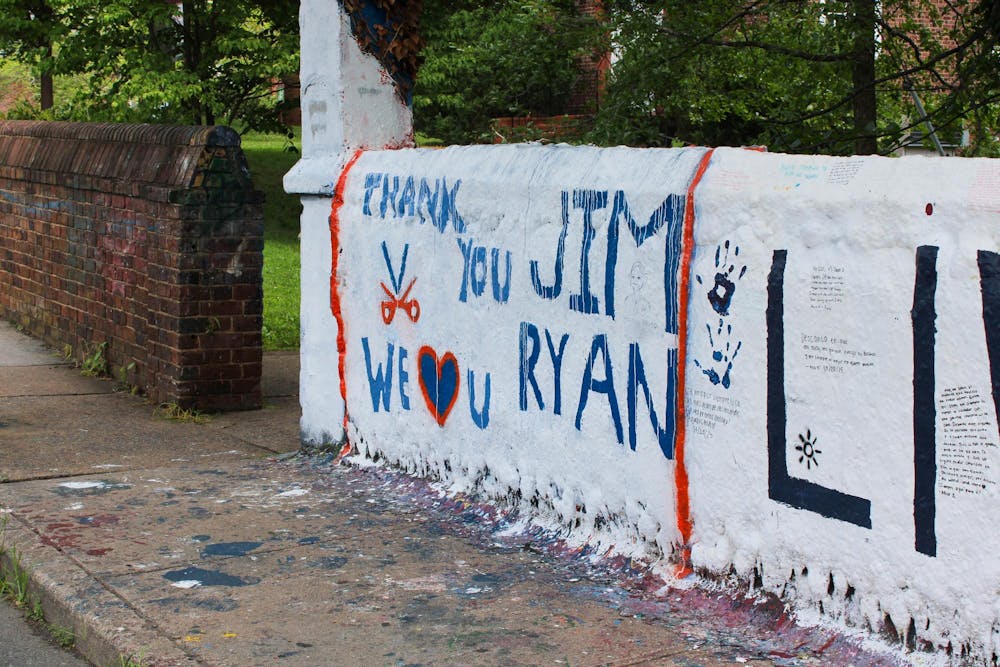It has been almost four weeks since former University President Jim Ryan resigned under pressure from the Department of Justice. Yet, there has been no true public accounting from the Board of Visitors or University administration as to either why Ryan was forced to resign in the first place or what this means for the University going forward. We only have a basic sketch of what transpired — the DOJ sent numerous letters to the University which, among other things, alleged violations of federal civil rights and the Supreme Court’s ruling on affirmative action. But the details are murky.
Key stakeholders — faculty and students — are tiring of continual obfuscations and a consistent lack of communication. The Faculty Senate has already passed a vote of no confidence in the Board, after repeated meetings in which Board Rector Rachel Sheridan and Vice Rector Porter Wilkinson failed to assuage, or ever truly address, faculty concerns about federal overreach and inclusive governance. Student Council has also passed a resolution calling for greater transparency and student inclusion in conversations. Simply put, stakeholders from all corners of the University have been left in the dark about the most basic and straightforward mechanics of what happened and what will happen going forward.
The result is a growing distrust of the Board of Visitors’ leaders. Instead of acting on a rhetorical commitment to transparency and inclusive governance, they have left us with a wide range of unanswered questions and no reason to trust that future processes will be transparent, fair and effective. Providing answers to the following questions seems absolutely necessary for the Board if it wishes to regain the trust of the University community.
Who responded to the DOJ’s letters?
There are many people who would logically have interfaced with letters from the DOJ — University legal counsel Cliff Iler, then-Rector Robert Hardie and Ryan himself. But what is puzzling about the University’s engagement with the DOJ is that the closer events get to Ryan’s resignation June 27, the more confusing the leadership situation becomes.
Beginning April 11, the DOJ launched a compliance review into the University under Title VI of the Civil Rights Act. The recipients of these letters include University administrators like Ryan, Iler and Hardie. However, by mid-June, the DOJ began to email external counsel Farnaz Thompson and incoming Rector Rachel Sheridan weeks before Sheridan’s term as rector officially started July 1. Sheridan insists that she did not negotiate with the DOJ prior to the beginning of her term as Rector on July 1, but these letters seemingly contradict that statement.
Why were these DOJ negotiations shifted from University counsel — whose job description is to negotiate on behalf of the University — to someone on the Board whose term as rector had not yet even begun? If Sheridan was not negotiating with the DOJ before her term started, who was doing so for the University from mid-June until July 1? The failure to provide answers to these basic questions have caused legitimate speculation over the manner in which negotiations with the DOJ were conducted.
Where are the guarantees?
In the letters it sent, the DOJ made a series of demands which the New York Times reported culminated in an ultimatum — Ryan resigns or the University loses millions in federal funding. Ryan has resigned in response to this demand. But what, if anything, did the University get in exchange for his resignation? Acting president Jennifer Wagner Davis has said that negotiations are ongoing and that a final resolution agreement will be made public after the DOJ concludes its investigation. If what this suggests is true — namely, that Ryan’s resignation came before the University's lead negotiator got genuine guarantees — it would reflect poorly upon whomever negotiated with the DOJ.
After all, this resolution agreement could change University life in myriad ways — scholarships could be dismantled, programs focused on the accessibility of the University could be ended or a full-scale investigation could continue, endangering millions of dollars in research funding and financial aid. The continuing lack of a resolution document leaves community members, whose futures as students and researchers hang in the balance, in an uncomfortable position which could likely have been avoided.
What comes next?
As we approach the one-month anniversary of Ryan’s resignation, it is difficult to know what comes next. Following Ryan’s resignation, Davis has become acting president, as the University’s chain of command dictates. But there is no public timeline for the searches for a University president or even an interim president, both of which are responsibilities that the Board must fulfill. To make the situation even more complicated and obscure, it is not even clear that the Board is legally allowed to meet, with Democratic state senators alleging that various state universities, including our own, have violated state law by allowing denied Board appointees to serve.
As it stands, students will be returning to Grounds with no concrete sense of who will be at the helm of this institution and little reason to trust the governing body, which has made no attempt to explain or justify its actions. As community members, we deserve transparency and accountability — transparency about what transpired in the lead up to Ryan’s resignation, and accountability for an unwillingness on the part of the Board to genuinely listen to and address stakeholders’ concerns.
We recognize that we do not have all the answers. But the reason the full picture is obscure is because the Board and its allies have obscured it. To those people, we say — if you want us to understand your actions, trust your judgment and support your governance, give us the courtesy of basic transparency. Answer our questions.
The Cavalier Daily Editorial Board is composed of the Executive Editor, the Editor-in-Chief, the two Opinion Editors, a Senior Associate and an Opinion Columnist. The board can be reached at eb@cavalierdaily.com.







